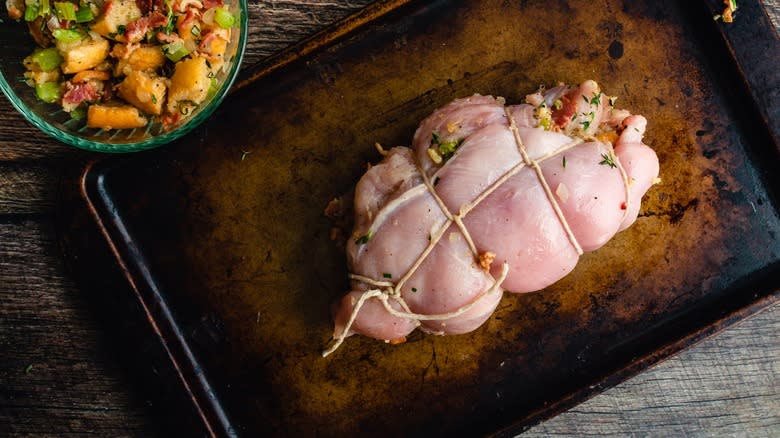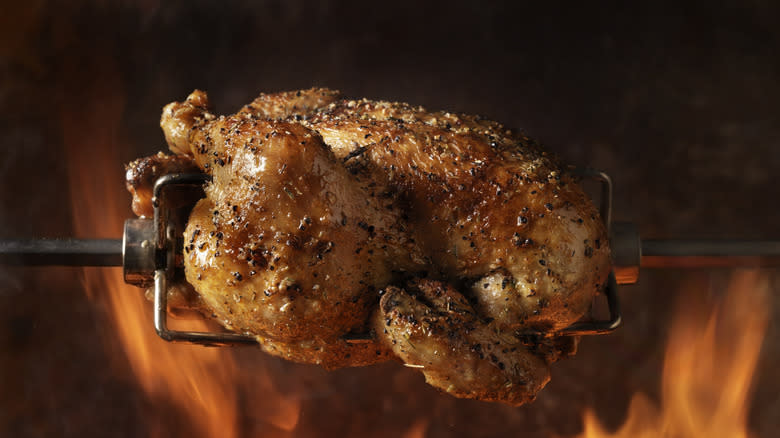When Should You Use Butcher's Twine When Cooking Meat?

When you're cooking meat, there are all sorts of tricks you can use to elevate your dinner game. You can smoke your meatloaf, use the broiler to achieve a nice crust, or even cook your meat with beer.
But one of the simplest ways to take your cooking to the next level involves a substance that professional meat preparers have long known about: butcher's twine. You may have seen it on cooking shows or in food photography, but you might still be unsure about when to use it.
So, what's the verdict on this material? It really depends on what you're doing with the protein you have on hand. You'll benefit most from trussing if your cooking methods involve low and slow preparation, such as with rotisserie. The main goal is to achieve an even cook, and the way twine shapes your meat helps not only with even cooking but also often maintains the shape of the meat even after the twine is removed.
Read more: 15 Tricks For Making The Most Crispy Chicken Thighs Ever
Rotisserie Chickens Should Be Made With Twine

The main context in which you'll encounter butcher's twine is with rotisserie cooking, particularly with rotisserie birds. Pretty much every rotisserie chicken you've ever eaten has been trussed; that's how it stays together on the spit. For larger turkeys, trussing isn't as critical, but using twine to hold a chicken's legs and wings in place creates a uniform shape. This uniformity is key to achieving that rich roasted flavor throughout the bird while keeping it juicy. That's why a rotisserie chicken works so well for dishes like gyros — the shape of the meat during cooking is what matters here.
While twine isn't the only material that can serve this purpose, it's the ideal choice for trussing a bird. Food-grade plastic is sometimes used, and in a pinch, you can even use dental floss when you run out of kitchen twine. However, butcher's twine remains the gold standard.
Twine Is Great For Roasts And Certain Steak Cuts

Trussing a bird is not the only way to use butcher's twine. The most obvious application is in roasts, where you use it to shape the meat. If you want a beef or pork roast to maintain a round shape, twine will help; it not only ensures even cooking but also preserves the shape after the twine is removed.
You've likely seen butcher's twine used on cooking shows as well, particularly with steak — most commonly filet mignon. It's wrapped around the sides to maintain a cylindrical shape, ensuring a consistent medium-rare cook throughout the cut. You can even pan-sear the ends this way before finishing the steak in the oven, as the twine won't touch the pan.
The key takeaway is that twine is most effective with slower cooking methods. You'll want to avoid exposing the twine to direct heat — no one wants the flavor of burnt rope — but it performs well under indirect heat. Following this guideline, butcher's twine can be a highly effective addition to your cooking toolkit.
Read the original article on Daily Meal.

